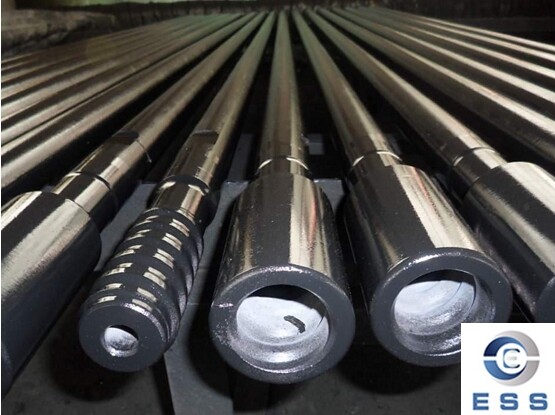
Drill pipe is a tool used for oil drilling and is part of the OCTG pipe. Its
diameter and model are one of the most important parameters in drilling. The
larger the diameter, the greater the drilling efficiency and load-bearing
capacity.
Common drill pipe diameter standards
1. Imperial drill pipe diameter standard
The imperial drill pipe diameter standard
is a common one. Its unit is inches (inch). Common diameters are: 2 3/8 inches,
2 7/8 inches, 3 1/2 inches, 4 inches, 4 1/2 inches, etc.
2. Metric drill pipe diameter standard
The metric drill pipe diameter standard
refers to the standard with diameter in millimeters (mm). The more common
diameters are: 60mm, 73mm, 89mm, 102mm, 114mm, etc.
Common drill pipe models and their
parameters
The drill pipe model is also an important
parameter in drilling. Different models of drill pipes are suitable for
different drilling needs. The following are several common drill pipe models
and their parameters (taking the imperial system as an example):
|
Model
|
Diameter
(in.)
|
Capacity
(10,000 lbs.)
|
Application
|
|
NC26
|
2
3/8
|
69
|
Shallow
well
|
|
NC31
|
2
7/8
|
106
|
Shallow
well
|
|
NC38
|
3
1/2
|
159
|
Middle
well
|
|
NC46
|
4
1/8
|
259
|
Middle
well
|
|
NC50
|
4
1/2
|
291
|
Deep
well
|
|
5
|
5
|
380
|
Deep
well
|
|
5
1/2FH
|
5
1/2
|
517
|
Ultra-deep
well
|
From the table above, it can be seen that
the diameters and parameters of different models of drill pipes are different.
In drilling, it is necessary to select the appropriate drill pipe model
according to actual needs.
How to choose the right drill pipe model
The following factors need to be considered
when choosing the right drill pipe model:
1. Well depth and well diameter
This is the first factor to consider when
choosing a drill pipe. Generally speaking, the greater the well depth and well
diameter, the thicker the drill pipe required, and its bearing capacity should
be enhanced accordingly. Therefore, for deep wells or large-diameter wells,
drill pipes with larger diameters and higher strength should be selected.
2. Drilling geological conditions
Different geological conditions have
different requirements for drill pipes. In softer formations, thinner drill
pipes can be selected to save costs and improve efficiency; in hard or complex
geological conditions, drill pipes with larger diameters, stronger materials,
and higher bearing capacity need to be selected to ensure the stability and
safety of drilling.
3. Drill bit and wellbore size
The size of the drill bit and wellbore
should match the drill pipe. The diameter of the drill pipe should be slightly
smaller than the diameter of the wellbore to ensure that the drill pipe can be
lifted and rotated smoothly in the wellbore. At the same time, the length of
the drill pipe should also be selected according to actual needs to adapt to
different drilling depths and working environments.
4. Drilling operation conditions
Harsh construction conditions (such as high
temperature, high pressure, high humidity, etc.) will affect the performance of
the drill pipe. Under these conditions, it is necessary to select a drill pipe
with higher strength, better corrosion resistance and longer service life.
5. Drill pipe material and performance
Drill pipes are usually made of
high-strength alloy steel to ensure their reliability under high pressure, high
temperature and harsh environments. Different materials and performance
characteristics will affect the service life and drilling efficiency of the
drill pipe. Therefore, when selecting a drill pipe, it is necessary to
comprehensively consider factors such as its material, strength, wear
resistance, and corrosion resistance. In addition to the above key factors, it
is also necessary to consider factors such as the connection method of the
drill pipe (such as API threaded connection or non-API threaded connection),
price, and supply channels.
Summary
In summary, choosing the right drill pipe
specification model requires comprehensive consideration of multiple factors,
and weighing and selecting according to actual needs and conditions. It is
recommended to consult professionals or refer to relevant standards and
specifications when selecting drill pipes to ensure that the selected drill
pipes can meet actual drilling needs and have good performance and reliability.
Read more: Size of Drill Pipe or How Many Types of Drill Pipe Threads Are There?













 Eastern Steel Manufacturing Co.,Ltd not only improve product production and sales services, but also provide additional value-added services. As long as you need, we can complete your specific needs together.
Eastern Steel Manufacturing Co.,Ltd not only improve product production and sales services, but also provide additional value-added services. As long as you need, we can complete your specific needs together.










